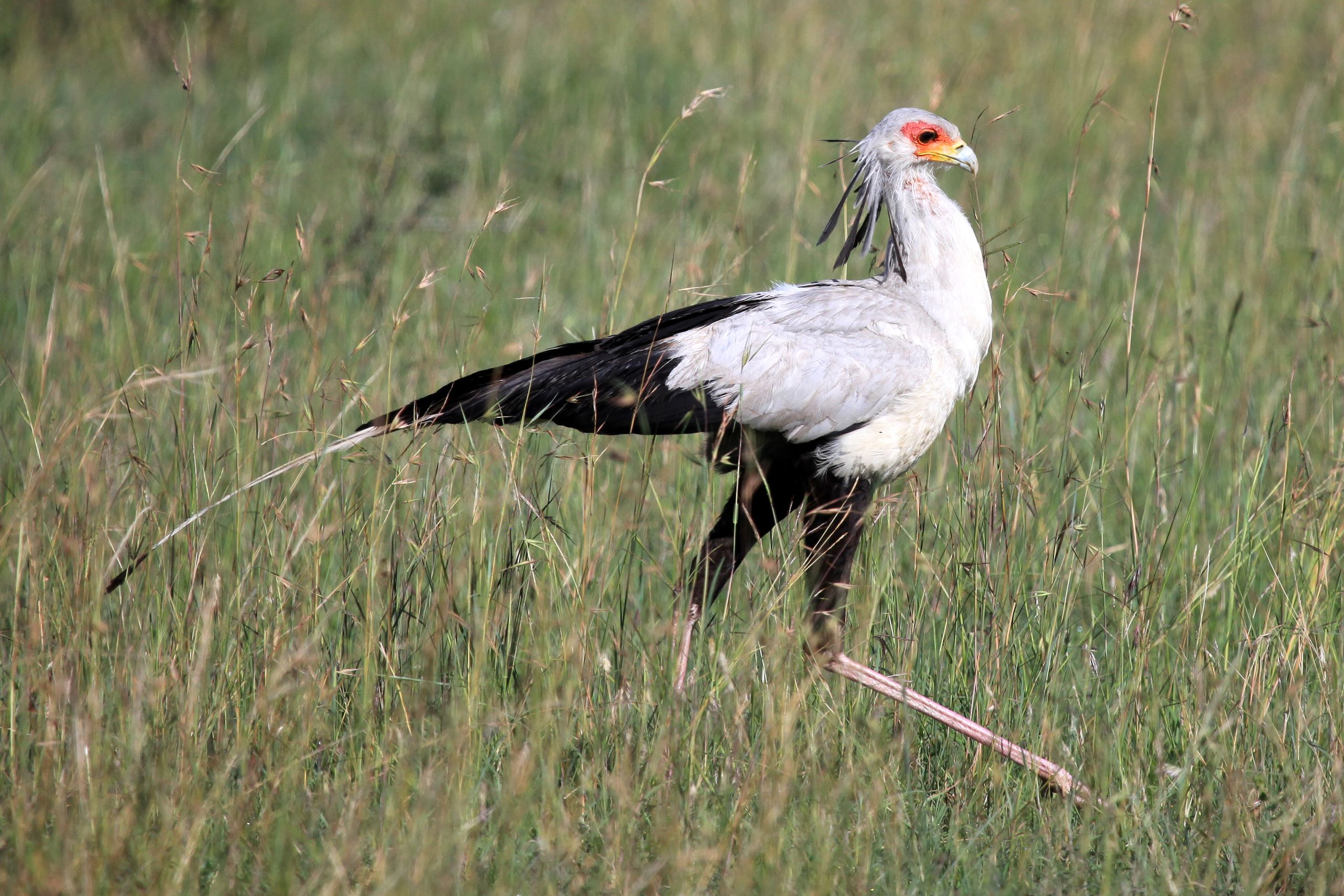
15 Birds to Watch in Amboseli National Park
15 Birds to Watch in Amboseli National Park
Amboseli National Park is situated in the heart of Kenya, and it’s a nature lover’s paradise renowned for its breathtaking landscapes and diverse wildlife. The park is not only famous for its majestic elephants and breathtaking views of Mountain Kilimanjaro, but it is also a hotspot for birdwatchers with more than 420 bird species recorded here. Amboseli’s unique habitats provide a habitat for an impressive range of bird species, making it a true paradise for birding enthusiasts. Here is a captivating list of 10 remarkable birds to watch in Amboseli National Park, their home.
1. Secretary Bird (Sagittarius serpentarius):
The Secretary Bird holds a special place as one of Africa’s most iconic avian species and tops our 15 Birds to Watch in Amboseli National Park. Its tall and striking appearance makes it instantly recognizable. With long legs, a crested head, and a powerful beak, this magnificent bird of prey gracefully traverses the grasslands of Amboseli National Park. Its unique hunting technique of stomping on its prey sets it apart, particularly snakes and small mammals.
Endemic to sub-Saharan Africa, the Secretary bird can be found across a vast range, stretching from Senegal to Somalia and the southern tip of South Africa. However, despite its adaptability to human-created open spaces for hunting, the species faces numerous challenges and requires our assistance.
Like many other wildlife species, Secretary bird populations are experiencing a decline across much of their range, and in some areas, they have completely disappeared. Habitat loss remains a significant issue for these birds, despite their ability to utilize certain human-made open spaces for foraging and hunting. The loss of suitable habitats threatens their survival and underscores the importance of conservation efforts to protect their natural environments.
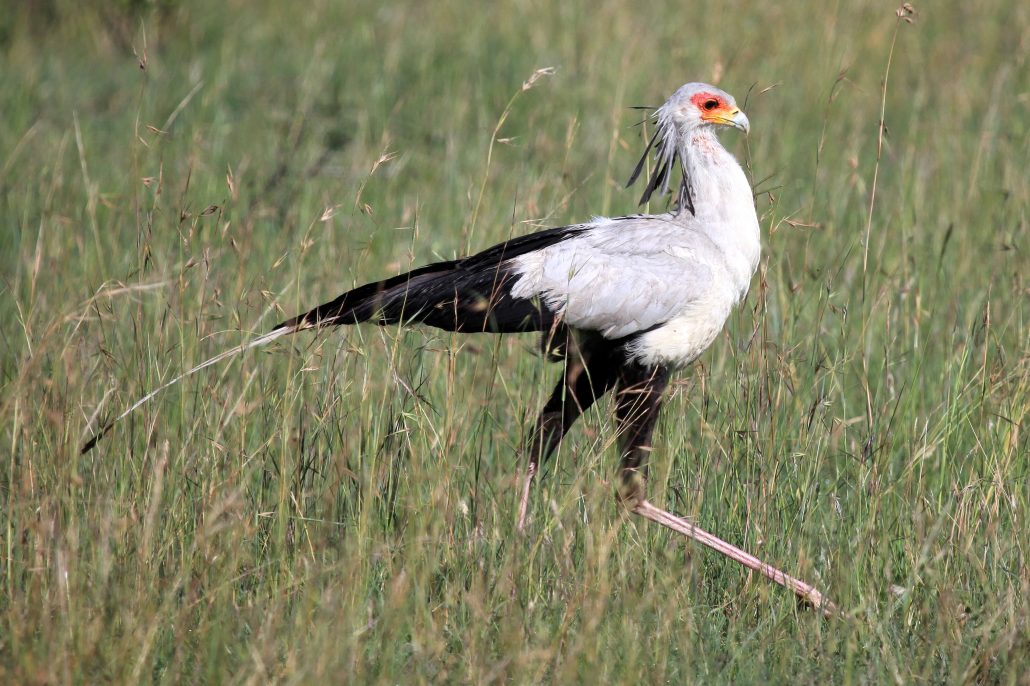
2. Superb Starling (Lamprotornis superbus):
The Superb Starling lives up to its name with its striking plumage. Its glossy blue and green feathers, adorned with vibrant orange markings, create a captivating sight against the beautiful grasslands of Amboseli. These friendly birds of Amboseli National Park are often spotted in small groups, showing off their acrobatic skills in the air and filling the surroundings with their melodious calls especially near the swampy areas of Amboseli National Park .
3. Grey-crowned Crane (Balearica regulorum):
Radiating elegance, the Grey-crowned Crane can be observed gracefully wading through the wetlands of Amboseli. With its tall stature, graceful movements, and intricate head feathers, this bird effortlessly captures the attention of anyone fortunate enough to encounter it. Its unique calls and elaborate courtship displays make for a remarkable spectacle, especially during the breeding season.
4. Martial Eagle (Polemaetus bellicosus):
The Martial Eagle, one of Africa’s largest and most powerful eagles, truly reigns over the skies. Its majestic presence is often witnessed as it soars high above the savannah, utilizing its sharp eyesight to search for prey. With an impressive wingspan of up to 2.6 meters, this awe-inspiring raptor is a sight to behold for bird enthusiasts exploring Amboseli.
5. Lilac-breasted Roller (Coracias caudatus):
The Lilac-breasted Roller adds a vibrant splash of colour to Amboseli’s woodlands and acacia savannahs. Its feathers boast a breathtaking combination of lilac, turquoise, and blue, creating a mesmerizing display of hues. This agile bird is renowned for its remarkable aerial maneuvers, gracefully twisting and turning through the air while skillfully hunting for insects.
6. African Fish Eagle (Haliaeetus vocifer):
The African Fish Eagle’s resonant call echoes through Amboseli’s wetland areas. Perched on tree branches overlooking lakes and swamps, this magnificent raptor emits its distinctive cry, symbolizing the untamed spirit of Africa. Its regal white head, earthy brown body, and formidable beak exemplify strength and beauty in equal measure.
7. Red-billed Hornbill (Tockus erythrorhynchus):
With its striking red and yellow beak, the Red-billed Hornbill is a charismatic inhabitant of Amboseli’s woodlands. These birds can often be spotted hopping through the branches, emitting unique calls and engaging in social interactions. Their unmistakable appearance and lively behaviour make them a beloved favourite among avid birdwatchers.
8. Red-billed Hornbill (Tockus erythrorhynchus):
The Red-billed Hornbill, with its vibrant red and yellow beak, is a charismatic Amboseli National Park woodlands resident. These birds often hop through the branches, emitting unique calls and engaging in social interactions.
9. Yellow-necked Spurfowl (Pternistis leucoscepus):
The Yellow-necked Spurfowl, with its distinctive appearance, adds a touch of charm to the diverse wildlife of Amboseli. The feather of the Yellow-necked Spurfowl exhibits a captivating blend of earthy hues, with a yellow neck and speckled patterns adorning its chest. These birds, which reside on the ground, seek refuge amidst shrubs and grasslands, where they skillfully search for seeds, fruits, and insects. Their resounding calls fill the air, contributing to a distinctive auditory experience that accompanies the vast expanse of the savannah.
10. African Grey Hornbill (Lophoceros nasutus):
With its striking black-and-white plumage and prominent red bill, the African Grey Hornbill is a true emblem of African avian diversity. With a distinctive call that echoes through the woodlands of Amboseli, these hornbills capture attention wherever they go. They are often seen perched on branches, meticulously searching for insects and small reptiles. Their nesting habits add to their fascinating behaviour, where the female is sealed inside a tree cavity by the male using a mixture of mud and droppings.
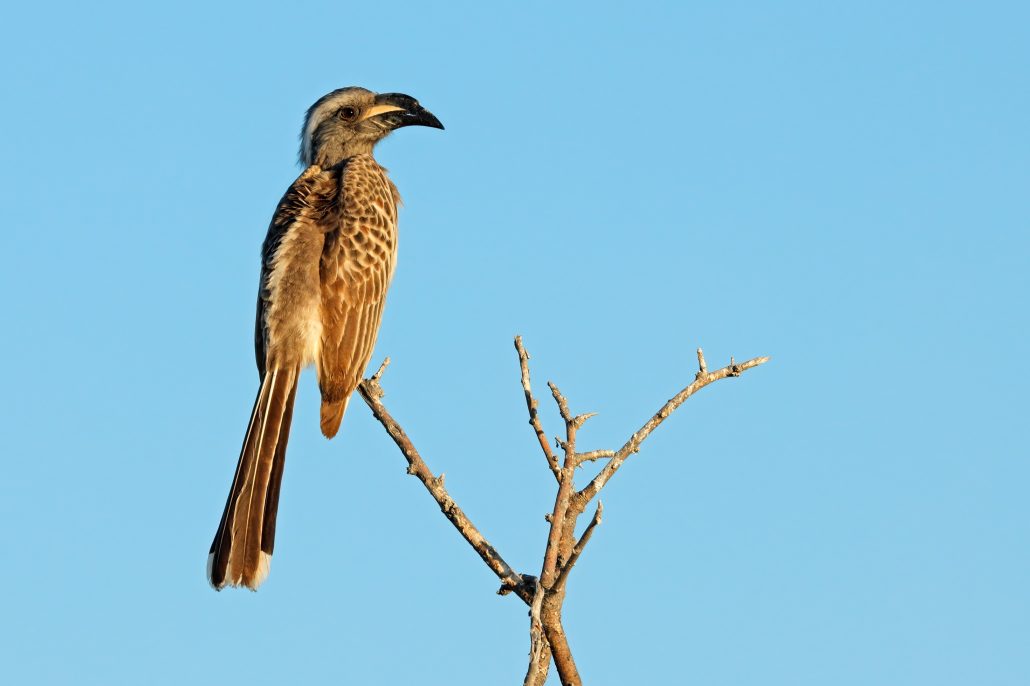
11. African Sacred Ibis (Threskiornis aethiopicus):
The African Sacred Ibis is a majestic bird gracing Amboseli’s wetlands and marshes. Its striking combination of black and white feathers, an elongated, curved bill, and a distinctive downward-curved crest is a sight to behold. These ibises are often seen probing the water or the surrounding mud for their favourite meals of insects, crustaceans, and small vertebrates. Their presence in ancient Egyptian art and culture has given them a sense of sacredness and mystique.
12. Black-winged Stilt (Himantopus himantopus):
With its elegant and elongated legs, the Black-winged Stilt stands tall as a graceful inhabitant of the wetlands in Amboseli. Its slender black and white body and long, thin pink legs create a striking contrast against the shimmering water. These avian waders are experts at foraging in shallow waters, probing the mud with their long bills in search of aquatic invertebrates. Their aerial displays and intricate courtship rituals are a mesmerizing sight during the breeding season.
13. Yellow-billed Egret (Egretta intermedia):
The Yellow-billed Egret, a symbol of elegance, can be found gracefully wading through the wetlands and marshes of Amboseli. As its name suggests, this medium-sized egret exhibits stunning white plumage and a vibrant yellow bill that stands out against its surroundings. With patient and deliberate movements, it stalks its prey, which includes small fish, amphibians, and insects, making it a master of the hunt in the aquatic realm.
14. Black-headed Heron (Ardea melanocephala):
The Black-headed Heron stands out with its striking combination of black and grey plumage and, of course, its distinctive black head. These statuesque birds can be found along the banks of rivers and in wetland areas, patiently waiting for their prey to appear. With their long necks and sharp beaks, they swiftly strike at fish, frogs, and small rodents, showcasing their remarkable hunting skills in the picturesque landscape of Amboseli.
15. African Spoonbill (Platalea alba):
With its unique bill resembling a spoon, the African Spoonbill is a striking and instantly recognizable species in Amboseli. Their white plumage, long legs, and spoon-shaped bills set them apart from other wading birds. These elegant birds are often seen wading through shallow waters, swinging their bills from side to side to catch small aquatic invertebrates. Their presence adds a touch of elegance and curiosity to the wetland ecosystem, leaving a lasting impression on any observer.
What is the Best time for Birding in Amboseli National Park
The best time for birding in Amboseli depends on different factors, such as the presence of migratory birds, breeding seasons, and weather conditions. Here are two optimal periods for birding in Amboseli National Park:
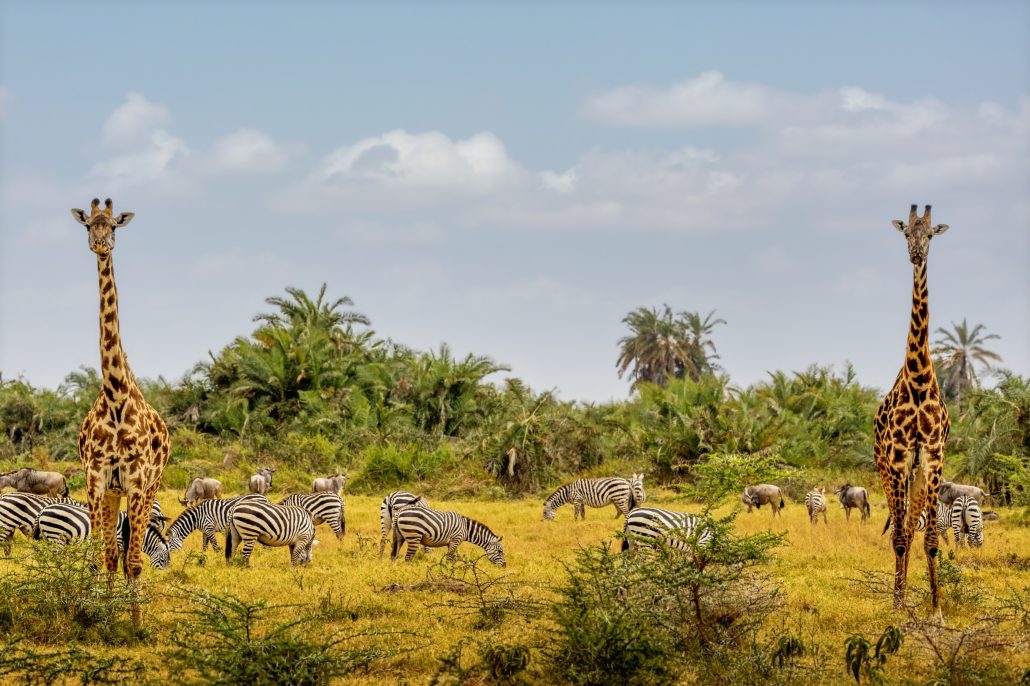
- Wet Season (March to May): Amboseli National Park transforms into a lush paradise during the wet season. The park’s wetlands and grasslands teem with birdlife as resident birds engage in breeding activities and migratory species arrive from distant lands. The abundance of water sources attracts numerous water-dependent bird species, including herons, egrets, and waterfowl. This season offers a fantastic opportunity to witness courtship displays, nesting behaviour, and the arrival of new fledglings.
- Dry Season (June to October): The dry season is another excellent time for birding in Amboseli. As water sources shrink, birds congregate around the remaining watering holes, making it easier to spot them. The sparse vegetation also improves visibility, enhancing the chances of observing resident and migratory species. Eagles and Hawks tend to be more active in the dry season. However, these two seasons offer unique opportunities to witness specific behaviours and the presence of both resident and migratory species. Ultimately, the choice of the best time for birding depends on your personal preferences and the specific bird species you wish to encounter. Don’t forget that Amboseli National Park is a great destination for birding thought the year. Please ensure that you check the cost of the kenya safari before you go
We hope you have enjoyed reading this article and hopefully 🙏 see you soon on one of our journeys ❤️😍🌍
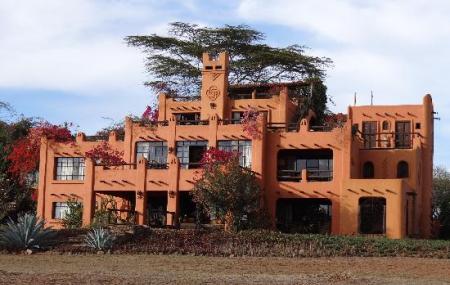
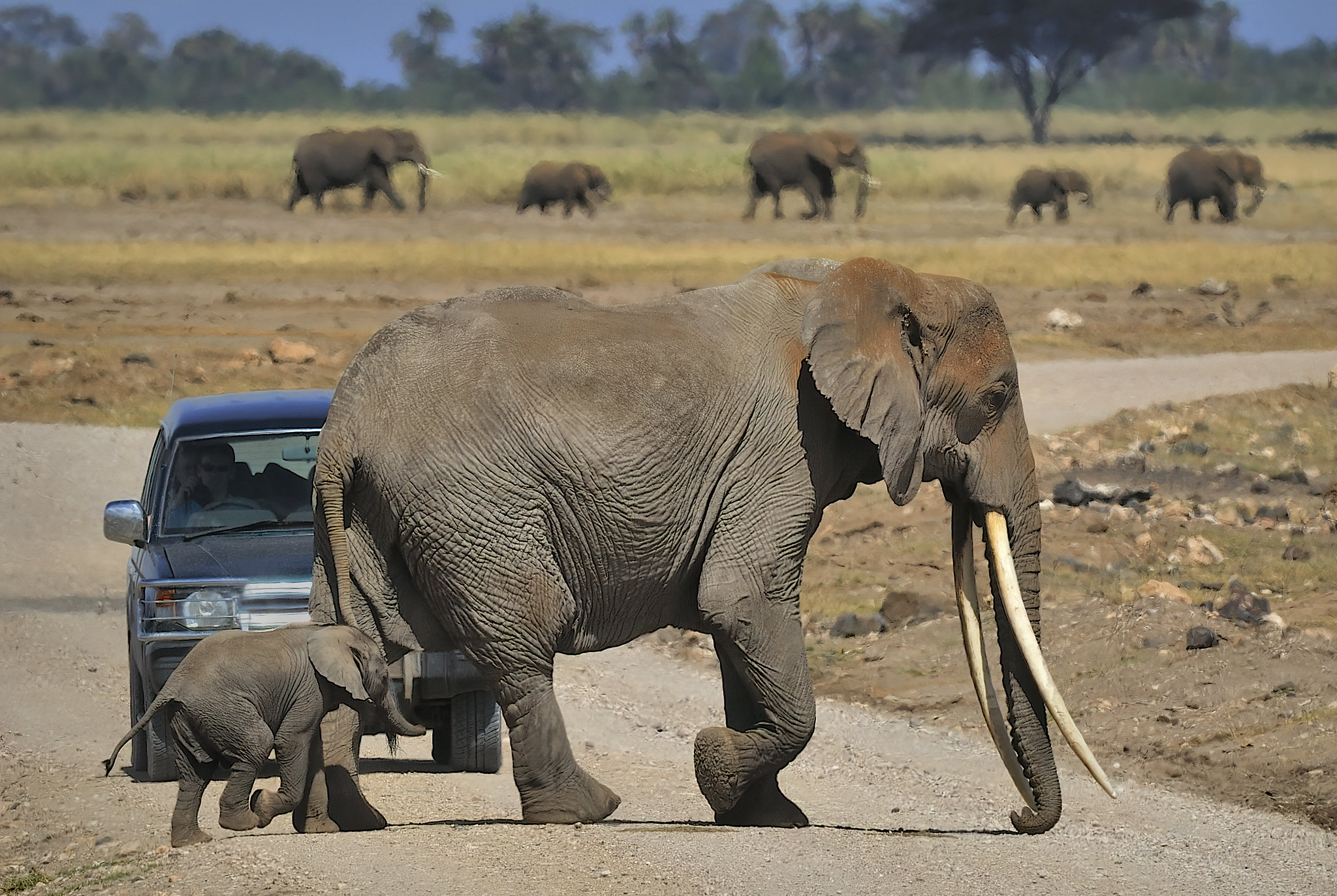
Best Time to Visit Amboseli national park
Best Time to Visit Amboseli national park.Best Time to Visit Amboseli national park : Amboseli…
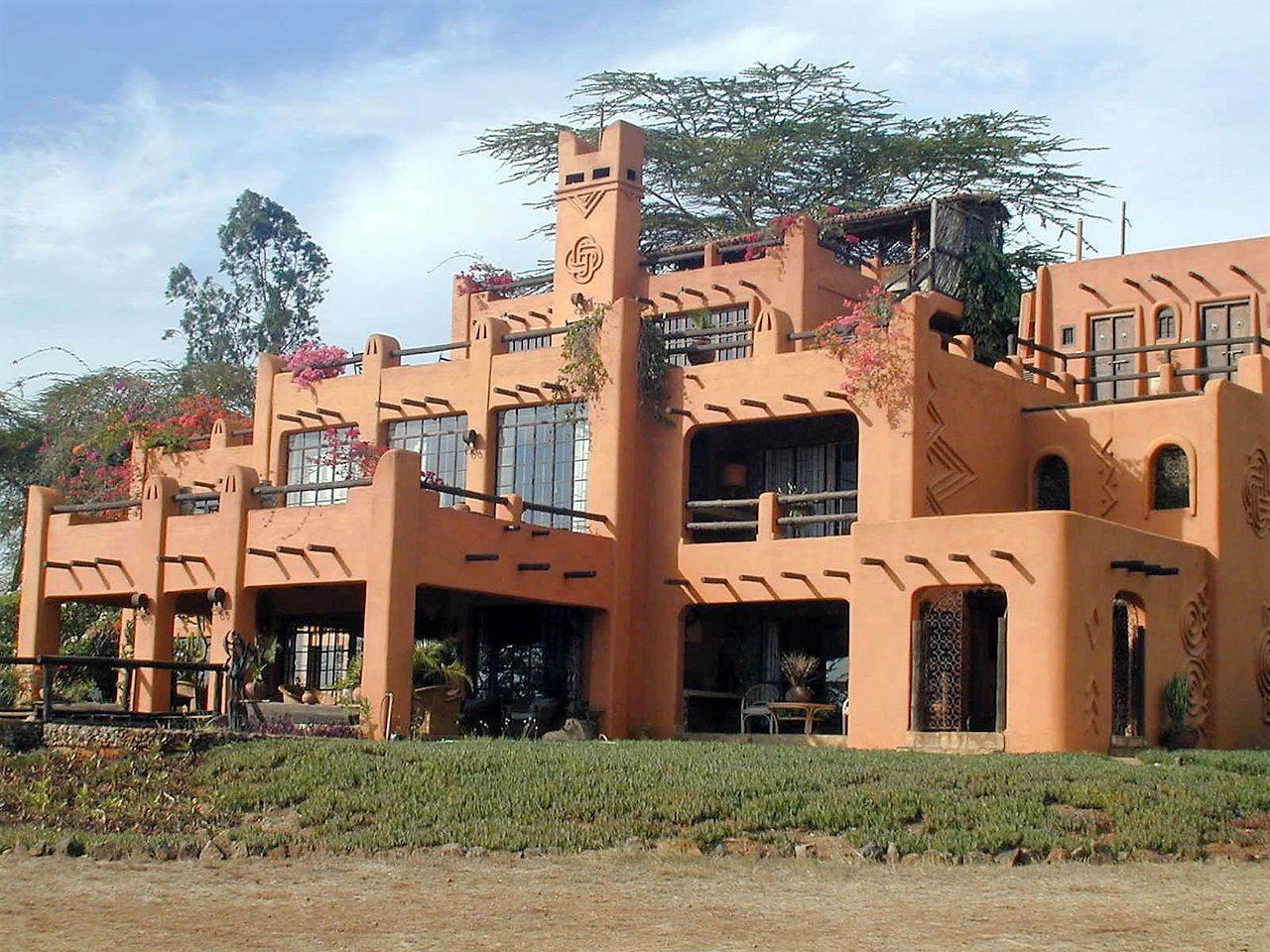
Nairobi National park hotels, lodges and accommodation
Nairobi National park hotels, lodges and accommodation Nairobi National park hotels, lodges and accommodation :…


